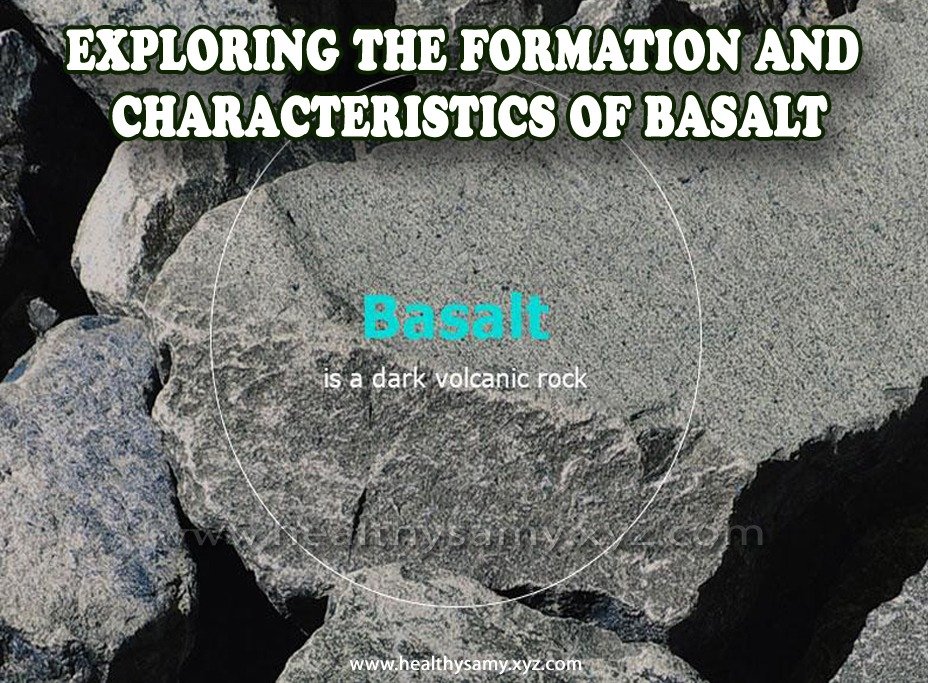Basalt is a fascinating igneous rock that holds great geological and scientific significance. It is formed from the solidification of molten lava, which erupts from volcanoes and cools rapidly upon contact with the Earth’s surface. In this article, we will delve into the formation process of basalt and explore the unique characteristics that make it an essential component of our planet’s geology.
Table of Contents
- Introduction
- How Basalt is Formed
- Composition and Mineralogy
- Physical Properties of Basalt
- Geological Distribution
- Importance of Basalt
- Basalt in Architecture and Construction
- Environmental Impact of Basalt Mining
- Future Research and Discoveries
- Conclusion
- FAQs
Introduction
Basalt is a volcanic rock that originates from the cooling and solidification of lava. It is commonly found in volcanic regions and is abundant in many parts of the world. The unique properties of basalt, such as its durability and versatility, have made it a valuable material in various industries.
How Basalt is Formed
Basaltic lava originates from the Earth’s mantle, which is the layer located beneath the crust. When a volcanic eruption occurs, the molten lava is expelled from the volcano and flows down the slopes or spreads out in thin sheets. As the lava comes into contact with the cool air or water, it rapidly cools and solidifies, forming basalt.
Composition and Mineralogy
Basalt is primarily composed of dark-colored minerals, including pyroxene, plagioclase feldspar, and olivine. These minerals give basalt its characteristic dark gray to black color. The specific mineral composition of basalt can vary depending on the location and geological conditions under which it was formed.
Physical Properties of Basalt
Basalt possesses several notable physical properties. It is a dense rock with a fine-grained texture and exhibits excellent durability and hardness. Its density allows it to sink in water, making it distinguishable from other rocks. Basalt also displays a range of colors, including black, gray, brown, and red, depending on its mineral content.
Geological Distribution
Basalt is widespread across the globe and can be found in various geological settings. It is commonly associated with volcanic regions, mid-ocean ridges, and hotspot locations. Major basalt formations exist in regions such as the Columbia River Plateau in the United States, the Deccan Traps in India, and the Siberian Traps in Russia.
Importance of Basalt
Basalt has significant importance in several industries and scientific research. Its durability and resistance to weathering make it an ideal material for construction purposes. Basalt fibers, derived from the rock, have excellent mechanical properties and are used in the production of high-strength materials. Furthermore, basaltic rocks provide valuable insights into Earth’s geological history and processes.
Basalt in Architecture and Construction
Due to its durability and aesthetic appeal, basalt finds extensive use in architectural projects. It is commonly employed in the construction of monuments, buildings, and paving stones. The dark color and uniform texture of basalt contribute to its visual appeal, while its strength ensures longevity in various environmental conditions.
Environmental Impact of Basalt Mining
The extraction of basalt through mining operations can have environmental consequences. These activities may lead to the disturbance of natural habitats, soil erosion, and alteration of waterways. Sustainable mining practices and environmental management strategies must be employed to mitigate these impacts and ensure responsible resource utilization.
Future Research and Discoveries
Continued research on basalt is essential for uncovering its full potential and understanding its geological significance. Scientists are exploring new applications for basalt fibers in areas such as infrastructure reinforcement and composite materials. Additionally, ongoing studies aim to enhance our understanding of basalt’s role in volcanic activity and its interaction with the Earth’s mantle.
Conclusion
Basalt, a volcanic rock formed from solidified lava, exhibits unique characteristics that make it a vital component of our planet’s geology. Its formation process, composition, physical properties, and geological distribution contribute to its significance in various industries and scientific research. As we continue to explore and study basalt, we uncover new possibilities and gain valuable insights into Earth’s dynamic processes.
FAQs
- What is basalt?
Basalt is an igneous rock formed from the rapid cooling and solidification of lava. - Where can basalt be found?
Basalt can be found in volcanic regions, mid-ocean ridges, and hotspot locations around the world. - What are the physical properties of basalt?
Basalt is a dense rock with a fine-grained texture, displaying excellent durability and hardness. - How is basalt used in construction?
Basalt is used in construction for various purposes, including monuments, buildings, and paving stones, due to its durability and aesthetic appeal. - What is the environmental impact of basalt mining?
Basalt mining can have environmental consequences, such as habitat disturbance and soil erosion. Sustainable mining practices should be implemented to mitigate these impacts.
Get Access Now: https://bit.ly/J_Umma











